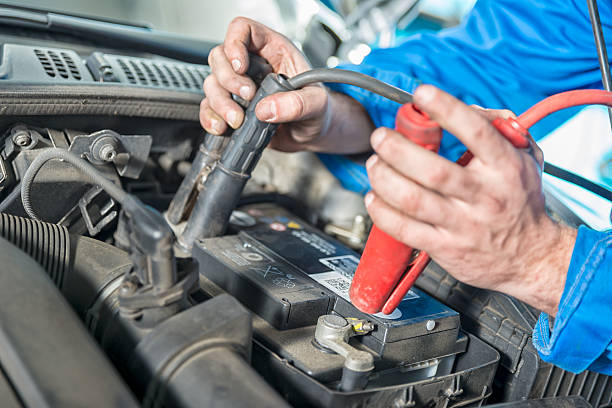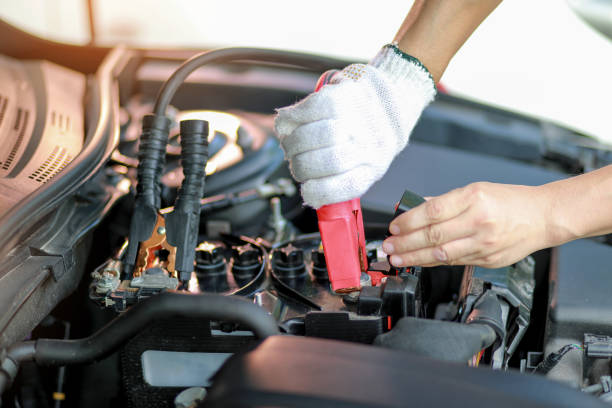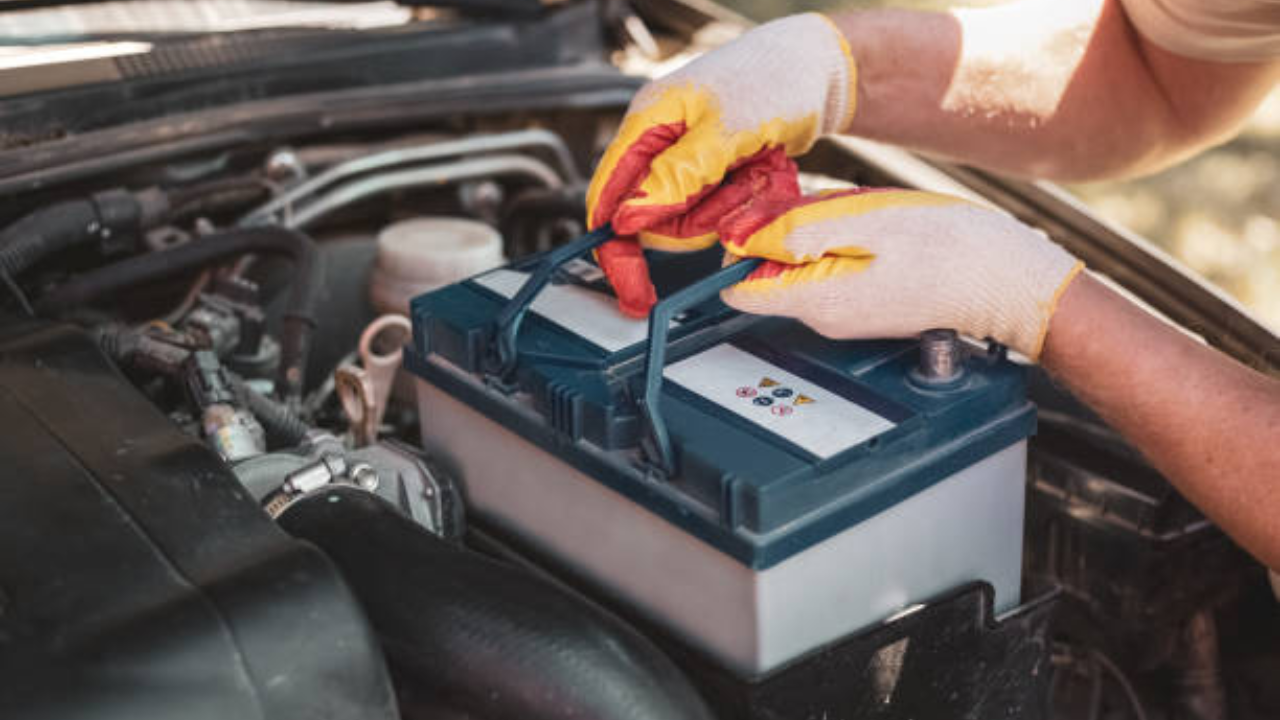Changing a car battery typically takes around 15 to 30 minutes. Factors such as the type of car and the skill level of the person changing the battery can affect the time it takes.
Regarding vehicle maintenance, one crucial aspect that often gets overlooked is the car battery. However, understanding the process and timeline for changing a car battery is essential for all car owners. We will explore the precise duration it takes to change a car battery, considering various factors that can impact the process.
By the end, you will comprehensively understand the time needed for this essential automotive task. So, let’s dive in and explore the nuances of changing a car battery.
Factors Affecting Battery Replacement Time
When changing a car battery, the time can vary depending on several factors. Factors such as the battery type, vehicle model, and level of experience all play a role in determining how long the replacement process will take. Understanding these factors can help car owners and technicians better plan for and execute a battery replacement efficiently.
Battery Type
Battery type influences the time it takes to change a car battery. Different batteries (e.g., lead-acid, AGM, lithium-ion) have unique installation requirements and can vary in size and weight, impacting the complexity and duration of the replacement process.
Vehicle Model
The vehicle model is also a significant factor in battery replacement time. The location and accessibility of the battery within the vehicle, as well as the presence of additional components that may need to be removed for access, can affect the overall time required for the replacement.
Level Of Experience
Experience level is crucial in determining how long it takes to change a car battery. An experienced technician may complete the replacement more efficiently due to familiarity with the process, while a novice may require additional time to navigate the steps and potential challenges.

Step-by-step Guide To Changing A Car Battery
When it comes to a car battery, there may come a time when you need to change it due to age or wear and tear. Changing a car battery can be straightforward if you have the necessary tools and know the steps involved.
This step-by-step guide will walk you through changing a car battery, making it easy to complete. Let’s get started!
Gathering The Necessary Tools
Before starting the battery replacement process, gathering the required tools for the job is essential. Generally, you will need:
- Wrench or socket set
- Battery terminal cleaner
- New car battery
- Safety gloves and goggles
Locating The Battery
The next step is locating the car battery, typically under the vehicle’s hood. Refer to your vehicle’s manual if you are unsure about its location.
Disconnecting The Old Battery
First, ensure the car is turned off and the ignition key is off. Then, loosen the bolts on the battery terminals using a wrench or socket set. Start with the negative terminal followed by the positive terminal. Then, carefully remove the old battery from the vehicle.
Installing The New Battery
Place the new battery into the tray, ensuring it sits securely. Next, secure the battery by tightening the bolts on the terminals, starting with the positive terminal followed by the negative terminal.
Reconnecting The Cables
Reconnect the cables to the corresponding terminals, ensuring the positive cable is connected to the positive terminal and the negative cable to the negative terminal. Finally, use a battery terminal cleaner to remove corrosion and ensure a clean and secure connection.
Tips To Speed Up The Battery Replacement Process
I am looking for tips to speed up the battery replacement process. Discover how long it takes to change a car battery and learn valuable insights to make the process quicker and more efficient. Increase your knowledge and save time with these helpful suggestions.
Preparation And Organization
Changing a car battery can be quick and straightforward if you are well-prepared and organized. You can follow a few key steps to save time and speed up the battery replacement. Firstly, gather all the necessary tools and equipment, such as a wrench, gloves, and safety goggles, before starting the replacement process.
Ensure that you have the correct battery size and type for your vehicle. This will prevent delays caused by needing to return to the store or search for the correct battery.
Ensuring Safety Measures
Safety should be your top priority when changing a car battery. Before starting, ensure the engine is turned off and the ignition is off. Then, locate the battery and identify any potential hazards, such as corrosion or loose connections.
It’s essential to wear protective gloves and safety goggles to avoid any harmful contact with chemicals or battery acid. In addition, be cautious when handling the battery to prevent dropping it or causing any damage. These safety measures will help maintain a smooth and safe battery replacement process.
Practicing Efficiency
Efficiency plays a significant role in speeding up the battery replacement process. You can save time by knowing the exact location and how to remove the old battery quickly. Use a wrench or socket set to loosen and remove the battery cables from the negative (-) terminal to the positive (+) terminal.
Consider using a battery terminal puller if the terminals are stuck. Once the old battery is removed, clean the terminal connectors and ensure they are free from corrosion or dirt. Now, you can easily install the new battery by attaching the positive (+) cable first and then the negative (-) cable.
After securing the connections, double-check that everything is tightened securely. This efficient approach will help you complete the battery replacement process swiftly and confidently.
Common Mistakes To Avoid
When changing a car battery, it’s essential to know the common mistakes that can be easily avoided. By being aware of these pitfalls, you can save yourself time, money, and unnecessary frustration.
This section will discuss three common mistakes to avoid when changing a car battery: mixing up battery terminals, not wearing protective gear, and ignoring battery maintenance.
Mixing Up Battery Terminals
Mixing up battery terminals is a common mistake that can lead to severe consequences. Car batteries have positive (+) and negative (-) terminals. It is crucial to connect the battery cables to the correct terminals. Failure to do so can result in electrical damage to your vehicle, including blown fuses or a fried electrical system.
To avoid this mistake, follow this simple rule: Red is positive (+), and black is negative (-). When removing the old battery, note which terminal the red cable is connected to. When installing the new battery, connect the red cable to the positive terminal and the black cable to the negative terminal.
Not Wearing Protective Gear
Not wearing protective gear is another mistake to avoid when changing a car battery. Although it may seem simple, handling a car battery can expose you to hazardous chemicals and potentially harmful fumes.
Before you start, make sure to wear protective gloves and safety goggles. The gloves protect your hands from any contact with corrosive battery acid, while the safety goggles shield your eyes from potential splashes. Safety should always be a top priority when working with car batteries.
Ignoring Battery Maintenance
Ignoring battery maintenance is a mistake that many car owners make, often leading to premature battery failure. Regular maintenance can help prolong the lifespan of your car battery and prevent unexpected breakdowns.
One important aspect of battery maintenance is keeping the battery clean and corrosion-free. Over time, a buildup of corrosion can interfere with the battery’s performance. To prevent this, inspect the battery terminals regularly and clean them with baking soda and water if any corrosion occurs.
Additionally, it is essential to check the battery’s fluid levels regularly. If the fluid level is low, add distilled water to the recommended level. This simple maintenance routine can go a long way in ensuring your car battery’s longevity.
By being mindful of these common mistakes and taking the necessary precautions, you can change your car battery safely and efficiently. Remember, extra care and attention can save you from potential headaches.

How many years to change car battery
The lifespan of a car battery can vary depending on factors such as the type of battery, driving conditions, and maintenance. On average, a car battery lasts about 3 to 5 years. However, it’s important to note that some batteries may last longer or shorter periods.
Regular maintenance, such as keeping the battery terminals clean, checking the electrolyte levels (for non-sealed batteries), and ensuring proper charging, can help extend the battery’s life. Additionally, extreme temperatures, both hot and cold, can affect the performance and lifespan of a car battery.
Suppose you notice signs of a weak or failing battery, such as difficulty starting the car, dimming headlights, or a warning light on the dashboard. In that case, it’s advisable to have the battery tested and replaced if necessary. Ultimately, changing a car battery depends on its condition and performance rather than a fixed time frame.
How long does it take to change a car battery after
The time it takes to change a car battery can vary depending on factors such as the make and model of the vehicle, the location of the battery, and the level of expertise of the person performing the replacement. Replacing a car battery is a relatively straightforward process typically completed in 15 to 30 minutes.
Here are the basic steps involved in changing a car battery:
- Safety first: Ensure the ignition is off and you have the necessary safety gear, such as gloves and safety glasses.
- Locate the battery: Identify the location of the car battery under the hood. It is usually in a plastic box with two terminals (positive and negative).
- Disconnect the cables: Start by disconnecting the negative (-) cable first, followed by the positive (+) cable. Use the appropriate wrench or pliers to loosen the terminal nuts.
- Remove the old battery: Remove any retaining brackets or straps holding the battery in place once the cables are disconnected. Lift the old battery out of its tray.
- Clean the battery tray: If there is corrosion or dirt, clean it before placing the new battery.
- Install the new battery: Place it in the tray and secure it with any retaining brackets or straps. Connect the positive cable first and then the negative cable. Tighten the terminal nuts securely.
- Check the connections: Ensure the battery is securely in place and the cable connections are tight.
- Start the car: Turn on the ignition to make sure the car starts without any issues.
While these steps provide a general overview, consulting the vehicle’s owner’s manual for specific instructions and safety precautions is essential. If you’re uncomfortable or familiar with the process, you should seek assistance from a professional mechanic or service center.
How long does it take for a car battery to die
The time it takes for a car battery to die can vary based on several factors, including the battery’s condition, driving habits, weather conditions, and the overall health of the vehicle’s electrical system. Here are some factors that can influence the lifespan and longevity of a car battery:
- Age of the battery: Car batteries typically last between 3 to 5 years, but this can vary. As a battery ages, its capacity to hold a charge diminishes, and it becomes more prone to failure.
- Driving habits: Frequent short trips without allowing the alternator enough time to recharge the battery can contribute to its premature failure. On the other hand, long drives help keep the battery charged.
- Weather conditions: Extreme temperatures, both hot and cold, can affect the performance of a car battery. High temperatures can accelerate the chemical reactions within the battery, leading to faster degradation. Cold weather can reduce the battery’s capacity and make it harder for the engine to turn over.
- Parasitic draws: Some vehicles have electronic systems that draw power even when the ignition is off. If there are excessive parasitic draws or if there’s an electrical issue in the vehicle, it can lead to a quicker depletion of the battery.
- Poor maintenance: Lack of maintenance, such as not keeping the battery terminals clean, can result in poor electrical connections and reduce the overall efficiency of the battery.
Suppose you notice signs of a weak or failing battery, such as slow cranking, dimming lights, or difficulty starting the vehicle. In that case, it’s advisable to have the battery tested and replaced if necessary. Regular battery maintenance, along with being mindful of driving habits and weather conditions, can help prolong the life of a car battery.
Frequently Asked Questions On How Long Does It Take To Change A Car Battery
How Long Does It Take To Change A Car Battery?
Changing a car battery typically takes about 30 minutes to an hour, depending on your experience and the complexity of your car’s battery installation. It’s a relatively simple DIY task that can save you money on labor costs at a car shop.
Remember always to follow the manufacturer’s instructions for your specific car model.
Can I Change A Car Battery Myself?
Yes, changing a car battery is a straightforward task that you can do yourself. Make sure to take safety precautions, such as wearing gloves and safety glasses. However, if you are unsure or uncomfortable with DIY car maintenance, seeking professional help is always recommended.
What Tools Do I Need To Change A Car Battery?
You’ll need a few essential tools to change a car battery: a wrench or socket set to loosen the battery terminals, a battery brush to clean any corrosion, and a battery terminal clamp or pliers. You may also need a battery charger if your old battery needs to be fully charged before disposal.
Do I Need To Disconnect The Car Battery To Change It?
Yes, it’s essential to disconnect the car battery before changing it to avoid any accidental electric shock or short circuit. Start by turning off the engine, then use a wrench or socket set to loosen and remove the negative (-) battery terminal first, followed by the positive (+) terminal.
This ensures a safe battery replacement process.
How long does it take to replace a battery in a car?
Replacing a car battery is a relatively quick task, typically 15 to 30 minutes.
Is changing a car battery easy?
Yes, changing a car battery is generally considered easy.
Can I drive my car after replacing battery?
Yes, you can drive your car immediately after replacing the battery.
How do I know when my car battery needs replacing?
You may need to replace your car battery if you experience slow cranking, dimming lights, or warning indicators or if the battery is over 3-5 years old.
Can a car battery last 10 years?
While uncommon, some car batteries can last up to 10 years with proper maintenance and ideal conditions. However, the typical lifespan is around 3-5 years.
Conclusion
The time it takes to change a car battery can vary depending on several factors, such as your experience, the specific model of your car, and the tools you have on hand. While it is a relatively straightforward process that can be done within 15-30 minutes, it is essential to take necessary precautions and consult your car’s manual if unsure.
Remember to wear protective gloves and eyewear to ensure safety throughout the process.

I am Nishadujjaman.I have two years of experience all types of battery like tesla battery,car battery etc. So I work on solving these issues and give various tips on these issues.
